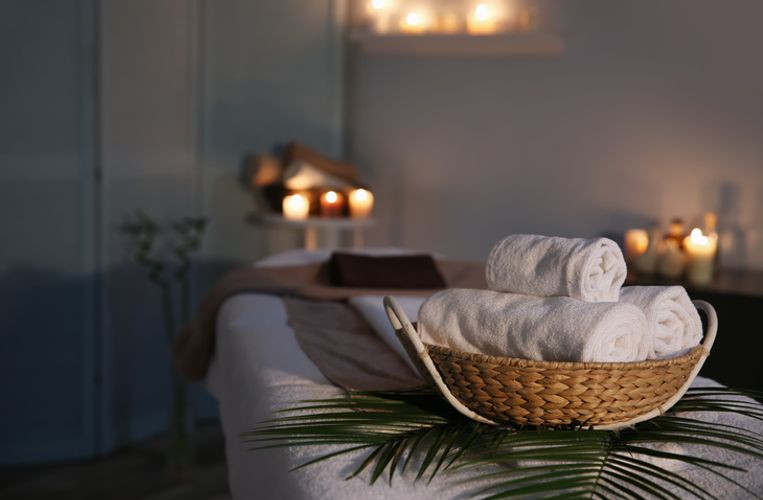Massage is almost universally appreciated, but the finer points of its techniques often remain a mystery, even to regular massage clients.
That may be because most of us are more interested in enjoying the benefits of a massage than understanding the practice in a detailed way. At least that?s usually the case when we're on the massage table, in the company of the professional massage therapist we might later wish we'd asked for more information.
Relaxing in the moment
Massage is an engrossing experience for many people - it can center us in our bodies, in the present moment. For others it lets us "bliss out" and lose ourselves, as usually-nagging aches and pains melt away.
In either case, we value the psychological shift we experience as part of a massage session. For many people, it's a rare moment in the day to stop worrying and simply tune in to immediate sensory experience.
This makes a massage session an unlikely or undesirable moment for abstract thinking or education for most people. But once you've experienced the benefits of massage, it's natural to want to know more.
"What is this magic my massage therapist is working on my poor aching back?" one client may wonder.
"These long, slow strokes at the start of a massage are soothing, but are they really doing anything for my body?" another client might want to know.
"Why does the massage therapist apply pressure for so long in one place, but not another?" a third client may ask themselves in retrospect.
The "magic" of massage is rooted in technique
While we relax on the table, a professional massage therapist is leafing through their mental catalog of techniques, considering our needs, goals and preferences, and examining the state of our bodies, including our physical and verbal feedback during the session.
While we relax, the massage therapist is actively engaged, making a series of choices about how to best use this time to maximize our health and wellness. The therapist then applies those choices with skills developed through both study and practice.
There is a lot going on here! To gain a deeper insight into how your massage therapist works their magic, let's peel back the curtain on some of their techniques. Following are five techniques your therapist may be employing to help you feel your best. Feel free to use what you learn as a conversation starter at your next session if they pique your interest, or simply relax and enjoy as you feel the effects:
1. Effleurage
Many massages begin and end with these long, gliding strokes performed with open palms or thumbs.
Effleurage strokes can be performed with greater pressure to loosen muscle knots, but are most frequently performed with gentle pressure to apply oil and warm up the body at the beginning of a massage session.1 This helps prepare the client's body for deeper pressure to follow, with less discomfort. Effleurage is also often used for transition between other techniques in the course of a massage, and for relaxation at the end of a session.2
The technique originates in Swedish massage and is one of the five basic movements used by therapists in that tradition; however it is widely used by therapists regardless of the type of massage. Effleurage is a French word indicating light or skimming touch.
2. Petrissage
This is another common massage technique rooted in Swedish massage tradition. It comes from the French word meaning "to knead," and generally involves higher intensity sensations than effleurage.
Though petrissage connotes kneading movements in French, as a massage technique, the term actually refers to a broader array of movements. According to a detailed guide from Acupuncture and Massage College - Miami, these include lifting and compressing soft tissues, 'wringing' tissue so that it presses against the bones beneath before it is lifted, and rolling motions of that can include muscle or just skin.
Petrissage is applied with steady rhythm, takes up the bulk of a strictly Swedish-style massage session, and helps do much of the heavy lifting in massage: releasing knots and tightness in the deeper skin tissue and in the muscles. 3
3. Tapotement, or Percussion
The French term tapotement means to tap or to drum, and indicates another stage in traditional Swedish-style massage, in which rapid, rhythmic touches are used to increase circulation and further loosen any tight areas on the client?s body.
Tapotement can be applied in a variety of ways for different effects and to target different parts of the body; fingertips, closed fists, cupped hands, open palms or the sides of the therapist's hands may be used. Tapotement is avoided in bony areas and for clients at special risk of injury, discomfort or bruising, including those who are very thin or elderly. 45
Percussion is often omitted when massage clients are seeking a more relaxing experience as well. However, this invigorating technique can have great benefits in sports massages for athletes experiencing muscle stiffness and soreness, desiring improved range of motion and more rapid recovery from workouts. 6For these conditions, percussion or tapotement can be a highly effective therapeutic massage technique.
4. Trigger point therapy
This technique was developed much more recently than the above ones rooted in Swedish massage therapy traditions, and is based on the concept that tight spots in tissue - also known as knots, or trigger points - can cause pain at other locations in the body ("referred pain").
Trigger points are thought to be tiny cramps, muscle spasms, or knots of contracted muscle.7 The contractions likely reduce blood flow, leading to more tightness, restricted and compensating movement patterns, and pain.
Trigger point therapy aims to stimulate blood flow to these pain-causing contractions, to relieve muscle tension, improve mobility, and decrease pain. To do this, a massage therapist uses sustained pressure, usually applied with the fingers, directly on the trigger point. The therapist generally holds the pressure for anywhere from 30 to 90 seconds, until the client reports a reduction in tightness or pain. 8
Trigger point therapy can ultimately lead to physical and psychological relaxation as it is a powerful tool for pain relief; however, the immediate experience of having significant pressure applied to a tight muscle contraction can be intense. For this reason, communication between the client and massage therapist is a crucial ingredient in successful trigger point therapy.
5. Myofascial release
Myofascial release therapy is a focus of many contemporary massage therapists, primarily because of its promise in relieving significant pain conditions.
Myofascial tissue is a type of tough, thin, fibrous connective tissue that supports and shields your bones and muscles throughout your body. Myofascial tissue damage - caused by disuse, strain, specific injury, or repetitive motion - is thought to play a role in creating trigger points.9
The technique of myofascial release therapy in massage involves the therapist using touch to identify areas where myofascia feel rigid, rather than elastic and pliable. Then the therapist works to bring greater blood flow and flexibility to these areas through stretching, stroking, and pressure.10
Ultimately, this is believed to aid in the dissolution of trigger points and pain.
Conclusion
The five above massage techniques represent some of the most common and fundamental approaches, as well as some of the hottest and most-promising recent developments in the field. They are by no means exhaustive, however!
The big-picture takeaway here is that the magic and mystery of massage as many clients experience it is actually skilled application of technique as practiced by a professional. If you'd like to learn more from your massage therapist about the techniques they use in your sessions with minimal interruption of the experience, a great option is to simply ask them to jot down the names of a few of the techniques they used post-session, for you to look up later.
Learning more about massage techniques can be interesting in an abstract way for curious massage therapy clients. But it can have practical impacts, too. By building your vocabulary and perspective on massage, you will facilitate higher-level communication with your therapist, and this can help you work together to maximize the benefits you enjoy from your massage therapy program. That?s why we've prepared this handy behind-the-scenes guide to some of the techniques your massage therapist is likely employing to help you feel your best.
The truth is, a massage therapist's work that feels like magic or simply mysterious in the moment is really skill, applied thoughtfully and deliberately to help you attain maximum wellness.
References:
1"Swedish Massage Techniques" :https://www.amcollege.edu/blog/5-techniques-of-swedish-massage-amc-miami
2"The 6 Most Common Massage Therapy Techniques Explained": https://www.yellowpages.ca/tips/the-6-most-common-techniques-of-massage-therapy-explained/
3"First Steps in Swedish Massage":https://www.centreofexcellence.com/first-steps-swedish-massage/
4"Swedish Massage Techniques": https://www.amcollege.edu/blog/5-techniques-of-swedish-massage-amc-miami
5"Percussion": https://www.ivyroses.com/Define/Percussion
6"Percussive Massage":http://fortitudesportstherapy.com/percussive-therapy/
7"Trigger Points and Myofascial Pain Syndrome":https://www.painscience.com/tutorials/trigger-points.php
8"Massage and Trigger Points":https://www.amtamassage.org/publications/massage-therapy-journal/massage-and-trigger-points/
9"Myofascial Pain Syndrome":https://www.webmd.com/pain-management/guide/myofascial-pain-syndrome
10"What Is Myofascial Release and Does It Works?" :https://www.healthline.com/health/chronic-pain/myofascial-release#how-does-it-work















